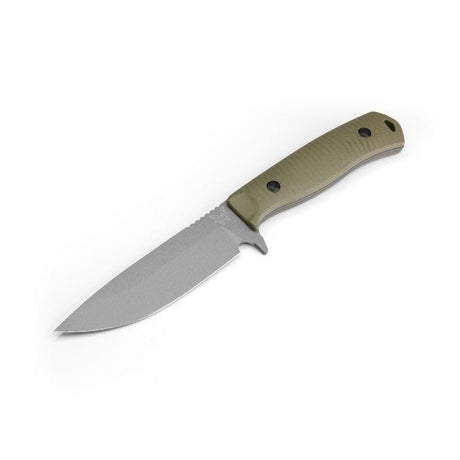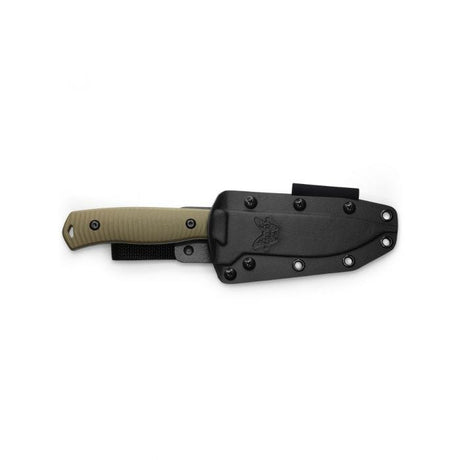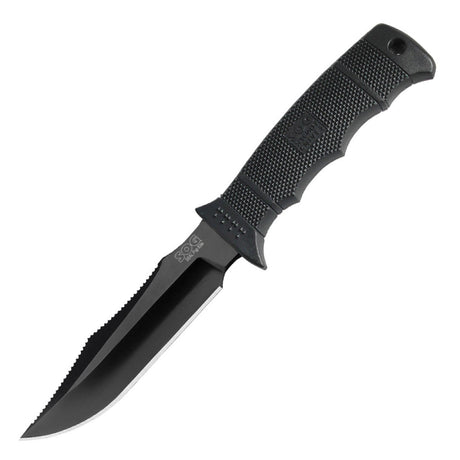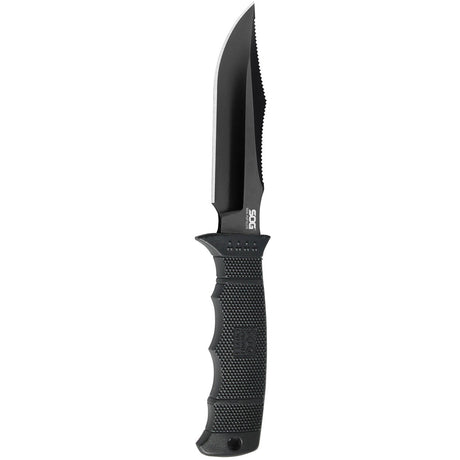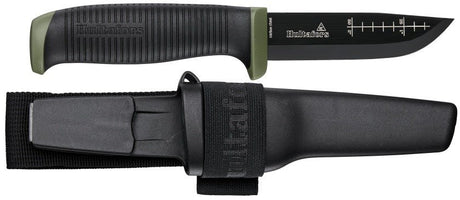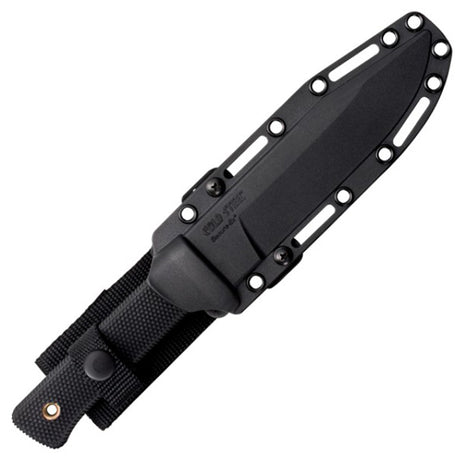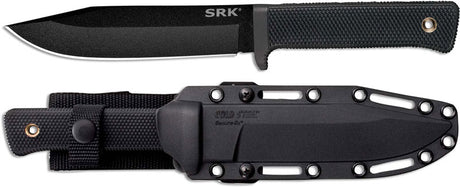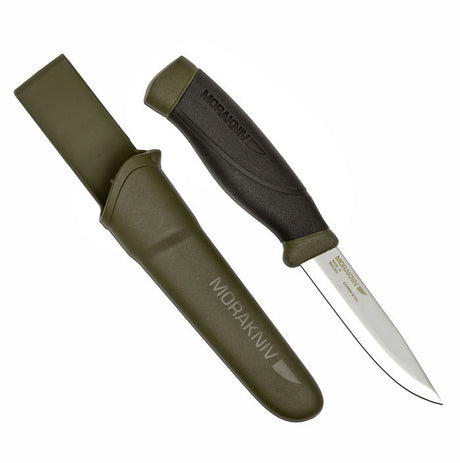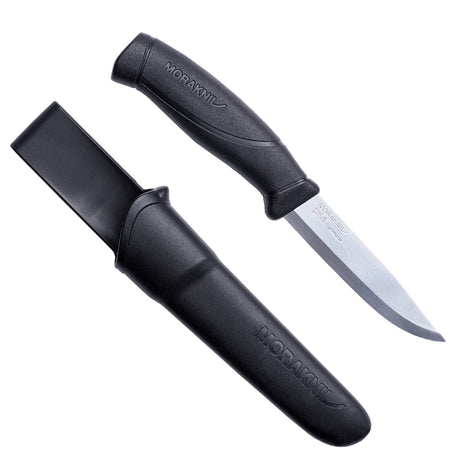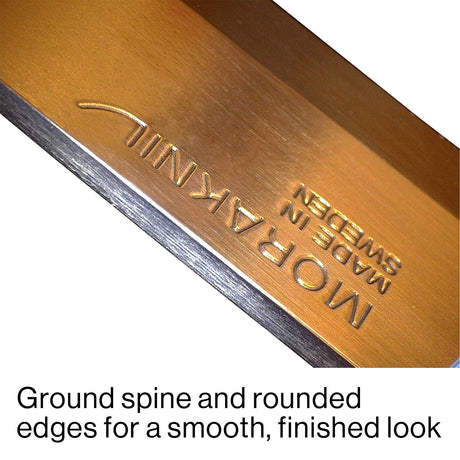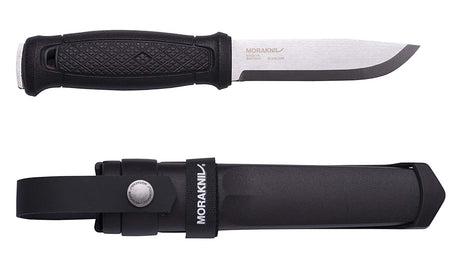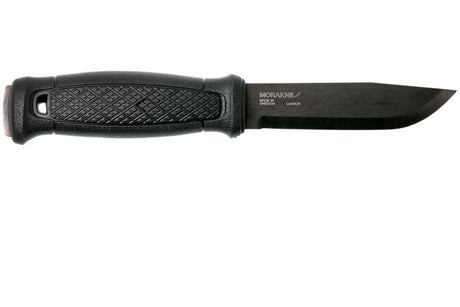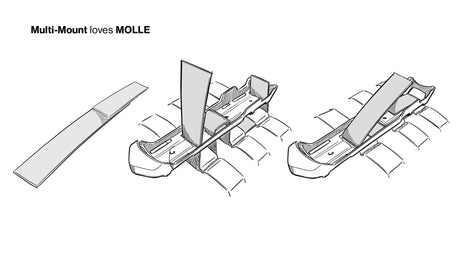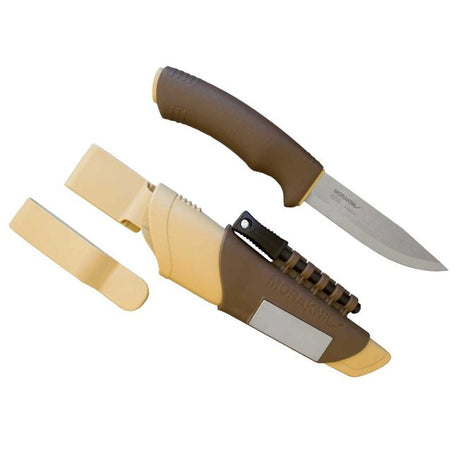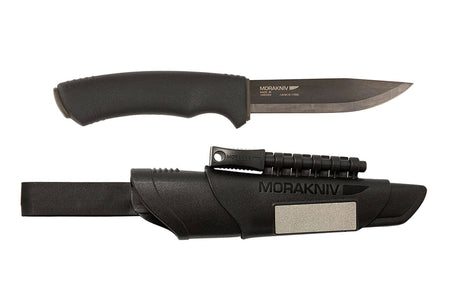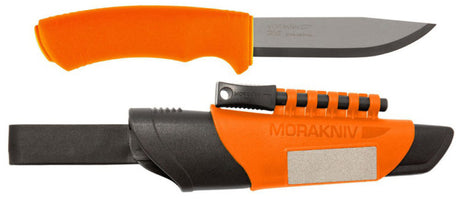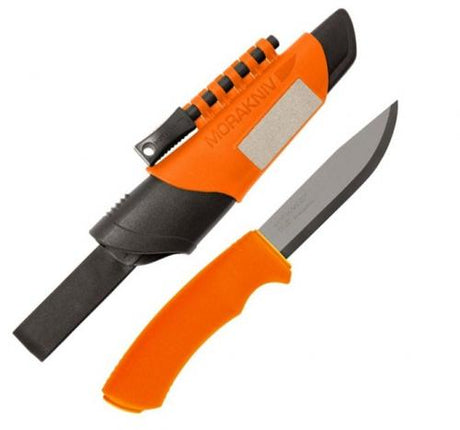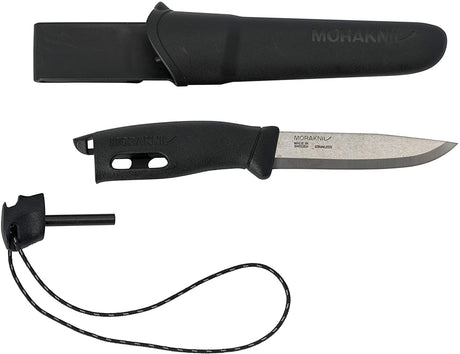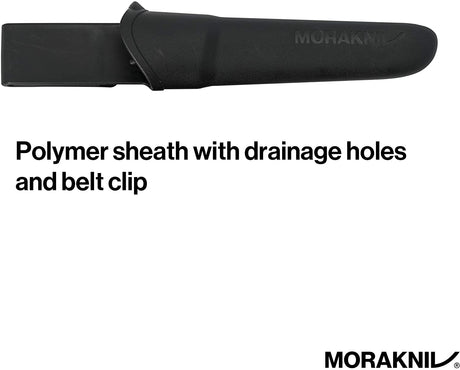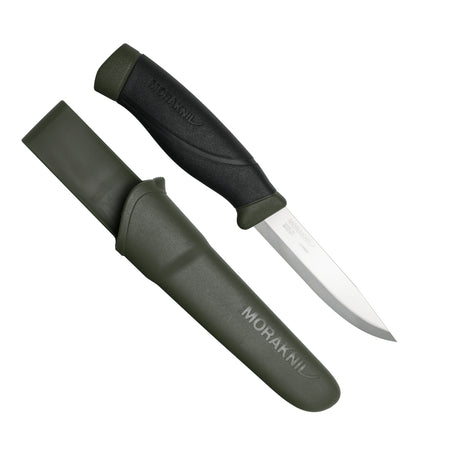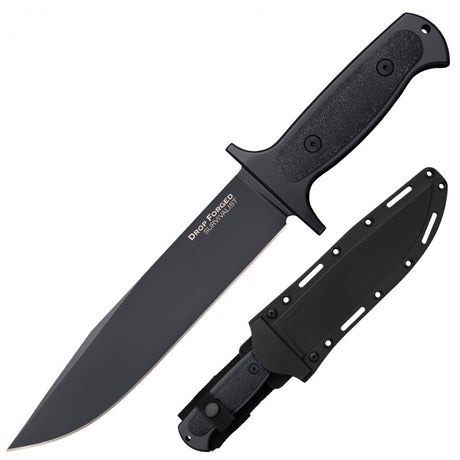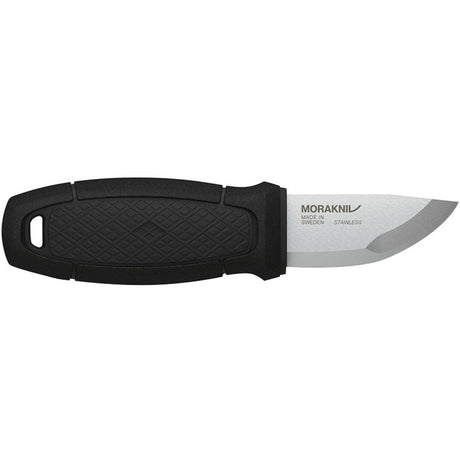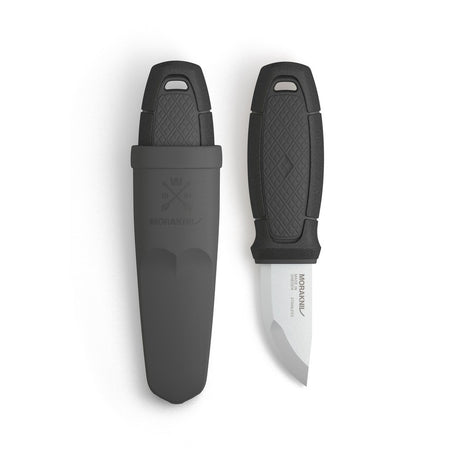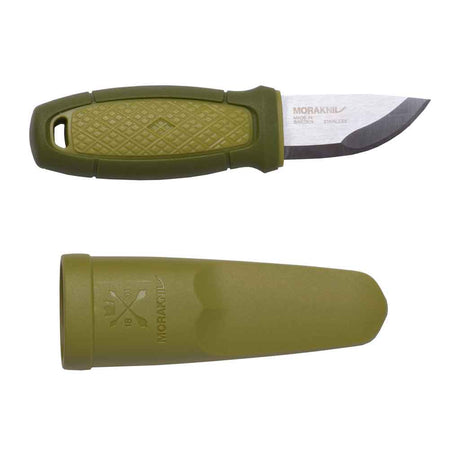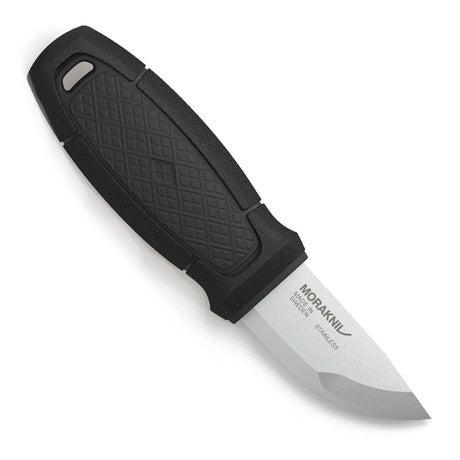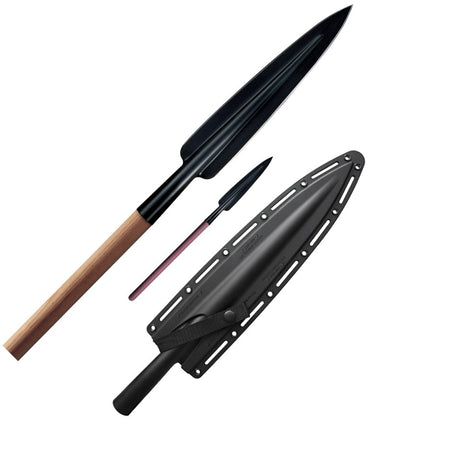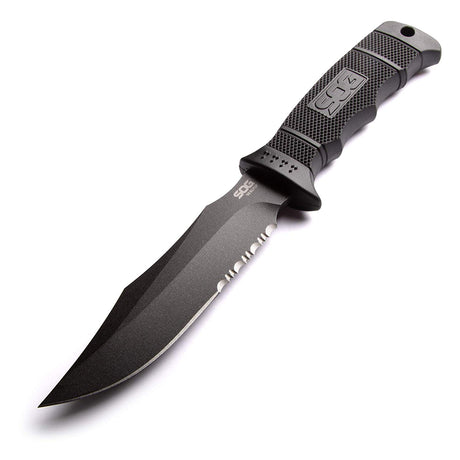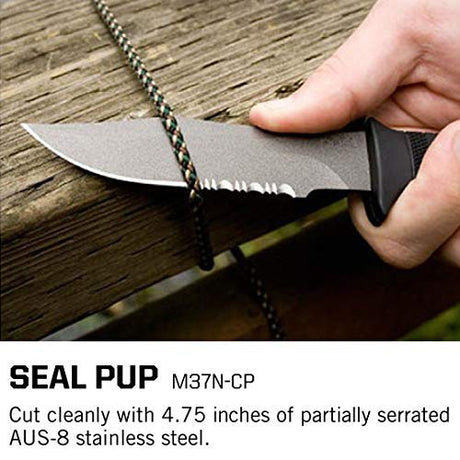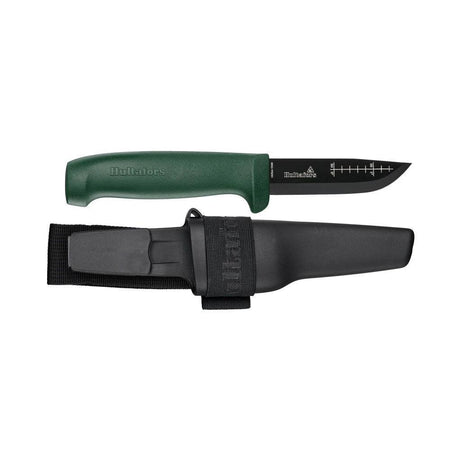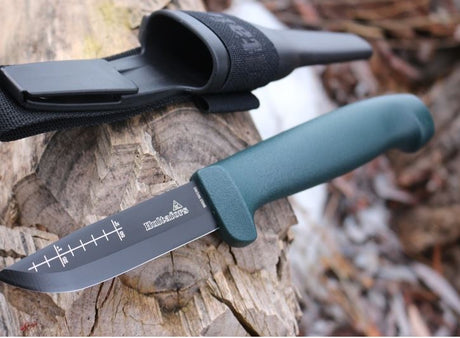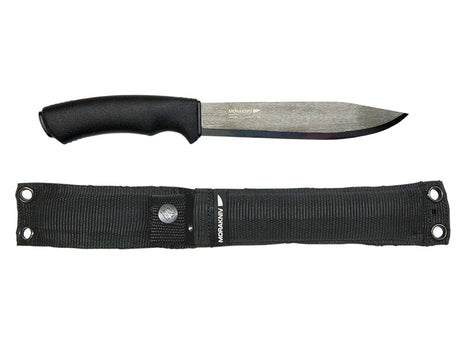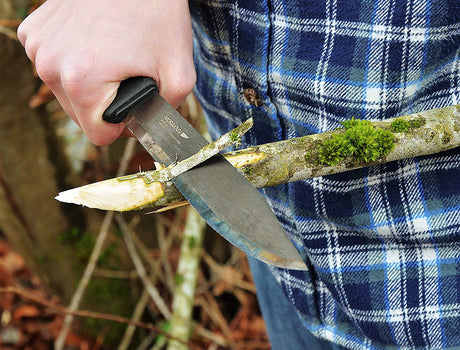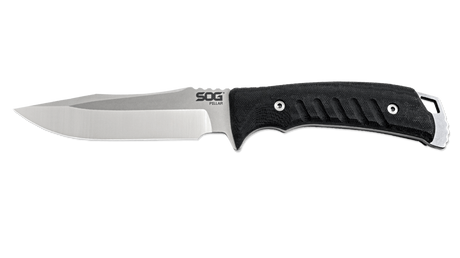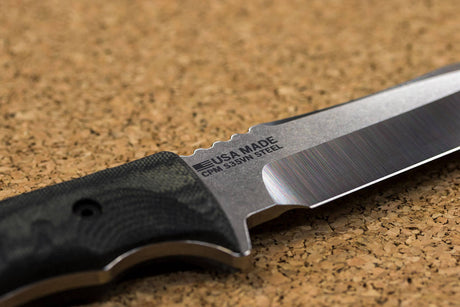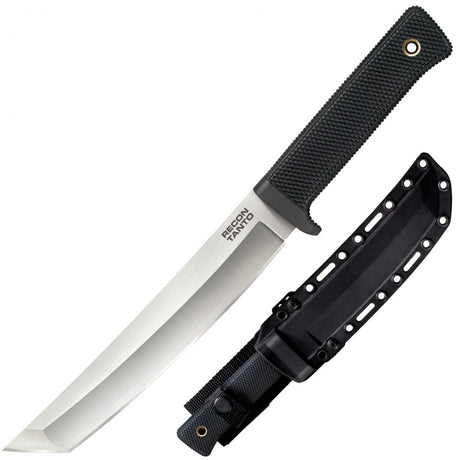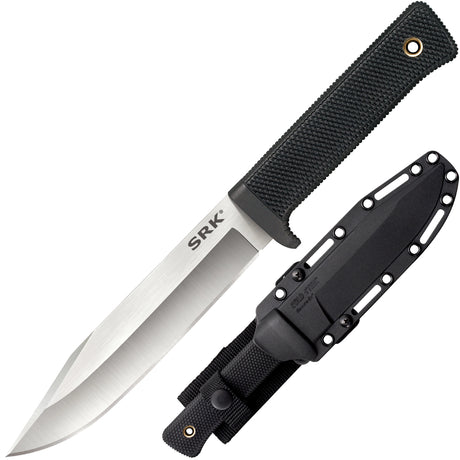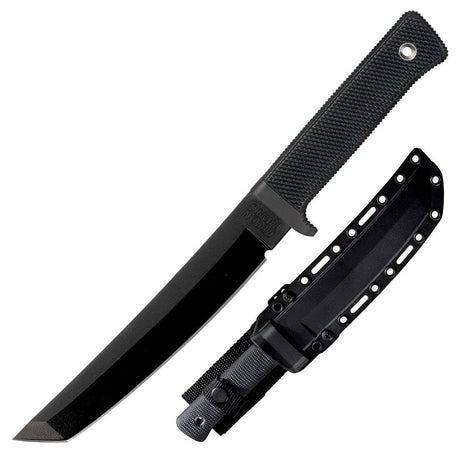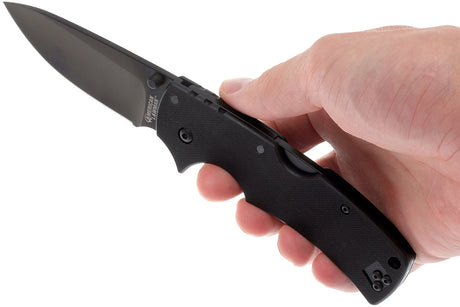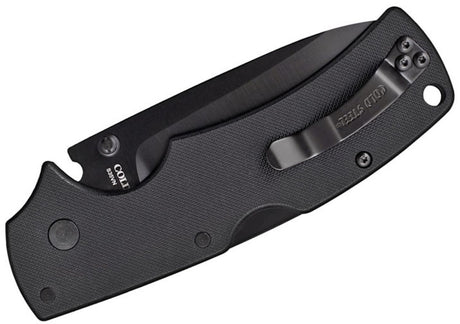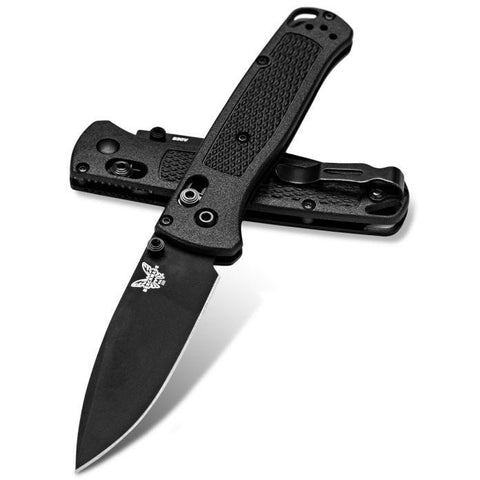
Best All-Around Hunting Knife
The history of the hunting knife is rich and varied, reflecting the changing needs and technologies over centuries. Initially, early humans used simple stone tools for hunting, evolving into more sophisticated implements with the discovery of metalworking techniques. Through the ages, these knives have adapted to serve not only practical purposes in hunting but also as tools of survival, especially in various cultures around the world. By examining the meticulous craftsmanship and design enhancements, it's evident that today's hunting knives are the culmination of centuries of evolution, designed to meet the modern hunter's diverse needs.
From the classic bowie knives to contemporary stainless steel options, each advancement tells a story of innovation and adaptation. The bowie knife, for instance, has roots in the 19th century and became famous for its broad, long blade, perfect for both combat and wilderness survival. As metals like Damascus steel were developed, they allowed for even sharper, more resilient blades, enhancing the knife's effectiveness in the field. This evolution reflects both the practical needs of hunting and the cultural symbolism of knives within different societies.
Key Features of the Modern Hunting Knife
The modern hunting knife is a marvel of design, combining various features that enhance functionality and durability. One of the primary features to consider is the blade material, with stainless steel and Damascus steel being popular for their resistance to rust and ability to maintain a sharp edge. The handle material is equally important, with options ranging from wood and bone to synthetic materials like G10, each offering unique advantages in terms of grip and comfort.
Blade design plays a crucial role in the usefulness of a hunting knife. A drop-point blade is ideal for skinning game, thanks to its strong, controllable tip, whereas a clip-point blade is excellent for making precise cuts. Furthermore, the full tang construction, where the metal of the blade extends into the handle, enhances strength and balance, an essential consideration for those relying on their knives in survival situations. These features make modern hunting knives not just tools but indispensable companions in the wild.
Choosing the Right Hunting Knife
Selecting the right hunting knife can be a daunting task, given the extensive array of options available on the market. Begin by considering the primary use of the knife—whether for skinning, gutting, or general utility, as each purpose may require a different blade shape or size. Next, assess the quality and durability of the materials, as a good hunting knife needs to withstand harsh conditions and rigorous use without compromising performance.
Comfort and grip are pivotal, especially when using the knife in wet or slippery conditions. Ensure the handle fits well in your hand and that the knife is balanced, making it easier to maneuver. Additionally, personal preference plays a role; some may favor the aesthetic of a handcrafted blade, while others seek the reliability of mass-produced models from trusted brands. Ultimately, the right hunting knife is one that you feel confident and comfortable using, aligning with both your functional needs and personal style.
Caring for Your Hunting Knife
Proper maintenance is essential to ensure the longevity and sharpness of your hunting knife. After each use, it's crucial to clean the blade thoroughly with warm water and mild soap, drying it immediately to prevent rusting. Regularly oiling the blade can further protect it from corrosion and help keep it in pristine condition for future use. Sharpening is another vital aspect of care; using a whetstone or sharpening tool ensures the blade remains efficient and safe to use.
The handle should not be neglected either—whether it's made of wood, bone, or synthetic materials, regular maintenance will prevent wear and ensure a firm grip. Store your hunting knife in a sheath when not in use, protecting it from environmental damage and accidental nicks. For those knives with leather sheaths, conditioning the sheath periodically prevents cracking and extends its life. By following these maintenance tips, your hunting knife will remain a reliable tool for years to come.
The Role of Hunting Knives in Survival Scenarios
In survival scenarios, a hunting knife is more than just a cutting tool; it's a lifeline. Whether it's building a shelter, preparing food, or defending oneself, the versatility of a hunting knife cannot be underestimated. Its robust construction allows it to withstand the rigorous demands of the wilderness, making it indispensable for outdoor enthusiasts and preppers alike. In crafting emergency tools or traps, the knife’s efficiency can be the difference between thriving and merely surviving.
Beyond these practical uses, a hunting knife can also serve as a psychological anchor in survival situations. The reassurance of having a dependable tool can boost morale, aiding both decision-making and mental resilience in stressful environments. It's this combination of utility and peace of mind that makes a high-quality hunting knife an essential component of any survival kit.
Anecdotes from the Hunting Field
Many seasoned hunters have tales of moments when their hunting knife made all the difference. Take, for instance, the story of a hunter caught in an unexpected downpour, who used his knife to fashion a makeshift shelter and start a fire, thanks to its sharp edge and dependable grip. Such stories emphasize not just the knife's utility but also its role as a trusted companion in challenging conditions.
Another anecdote features a prepper who relied on their knife during a remote hiking trip to procure food and make crucial repairs to gear, underscoring its versatility. These experiences highlight the profound trust and reliance built between a user and their hunting knife over time. These tools become extensions of the user, critical when nature decides to test resilience and ingenuity.
Finding Your Fit at Canadian Preparedness
At Canadian Preparedness, we understand the importance of a reliable hunting knife in every outdoor enthusiast's collection. Our selection is tailored to meet the needs of both novice and experienced hunters, ensuring you can find the perfect fit for your specific requirements. With our extensive range of products, from traditional to contemporary designs, we offer hunting knives that combine superior craftsmanship with cutting-edge technology.
Our knowledgeable team is committed to helping you choose a knife that aligns with your needs and preferences. Whether you require a compact knife for easy carrying or a robust model for heavy-duty tasks, we have options that cater to every scenario. By prioritizing quality and functionality, Canadian Preparedness remains the ultimate destination for your hunting knife needs, ensuring you are prepared for whatever challenges the outdoors may present.
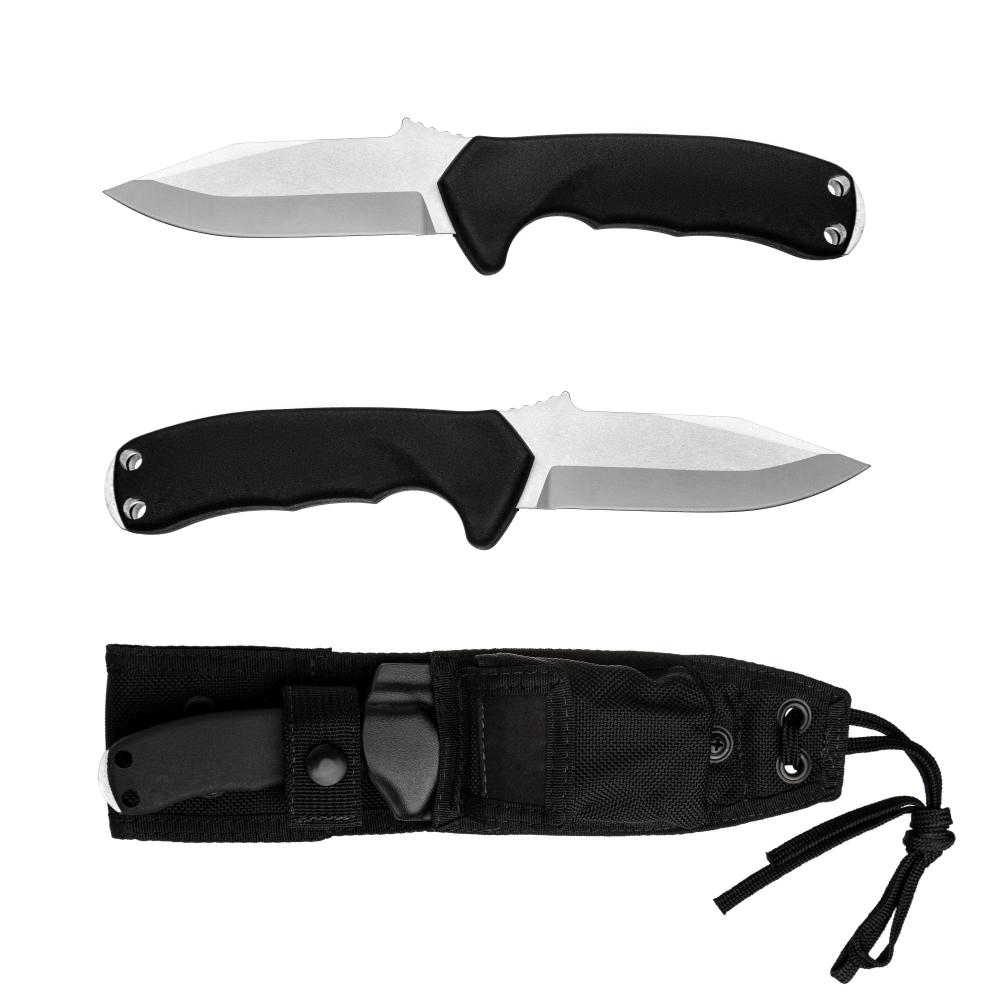
Is it legal to walk around with a hunting knife?
Carrying a hunting knife can be complex legally as it often depends on local laws and the context of carrying. In many places, carrying a knife for legitimate purposes, like hunting or outdoor activities, is permissible. However, walking around with a hunting knife in urban or public settings without a clear reason can be illegal and deemed as possessing a weapon. It's crucial to familiarize yourself with local knife laws to ensure compliance. If you're venturing into the outdoors, a reliable hunting knife from Canadian Preparedness is indispensable, but always check what’s permissible where you are. Have you ever encountered surprising regulations regarding outdoor gear?
What is a hunting knife called?
A hunting knife is often simply referred to as a "hunting knife," although specific types have their own names, like the bowie knife or the skinning knife. The terminology can sometimes reflect the knife's design or use case. At Canadian Preparedness, we offer a range of hunting knives tailored to tasks like skinning, gutting, or general utility. Each knife is expertly crafted to ensure durability and functionality for demanding outdoor environments. Whether you're a seasoned hunter or new to the field, understanding the distinctions can enhance your hunting experience. What features do you find most vital in a hunting knife?
What knife do navy seals use?
Navy SEALs are known for their use of the KABAR and other specialized knives designed for combat and survival. These knives are built to withstand the harshest conditions with robust materials and practical designs. While Canadian Preparedness doesn’t offer military-grade knives, we ensure our hunting knives provide exceptional reliability and performance, similar to what's expected of military equipment. We focus on durability and multifunctionality, making them a superb choice for both hunters and survivalists. When selecting a knife, do you prioritize utility or resilience more?
What kind of knife is best for hunting?
The best hunting knife for you hinges on your specific needs, such as the type of game you're pursuing and your personal preferences. A drop-point blade is often favored for its versatility, while a clip-point blade is excellent for more detailed work. At Canadian Preparedness, we suggest considering factors like blade material and handle comfort to ensure that your knife aligns with your hunting requirements. Ultimately, the ideal knife is one that feels like an extension of your hand—capable, reliable, and ready for the tasks you face in the wild. What are your experiences with different knife designs?
How to choose a hunting knife?
Choosing the right hunting knife involves evaluating several key factors. Start by determining your primary use—skin cutting, meat processing, or multipurpose tasks—then look for a blade shape and material that suits that use. Quality and durability are paramount, especially in challenging conditions, so opt for high-grade materials like stainless steel. Comfort and balance in the handle are also important, particularly when used in wet or slippery situations. At Canadian Preparedness, we offer a variety of knives designed to meet these criteria, helping you make a choice that marries utility with personal preference. Do you have any specific requirements for your hunting gear?
Resources
- National Park Service - The National Park Service offers information on hunting regulations, safety tips, and conservation efforts in national parks.
- Outdoor Life - Outdoor Life provides articles, reviews, and tips on hunting knives, gear, and techniques for outdoor enthusiasts.
- National Shooting Sports Foundation - The National Shooting Sports Foundation promotes hunting and shooting sports through education, research, and advocacy.
- American Hunter - American Hunter offers hunting news, gear reviews, and hunting knife recommendations for hunters of all levels.

